Fault Diagnosis for China Space Station Circulating Pumps: Prototypical Network with Uncertainty Theory
Abstract
1. Introduction
- (1)
- A new fault diagnosis method based on uncertainty theory is proposed, which captures an accurate understanding of aleatoric and epistemic uncertainties.
- (2)
- Compared with other fault diagnosis methods, such as CNN (Convolutional Neural Network), the new method achieves more accurate and reliable diagnosis results when few labeled samples are available.
- (3)
- The new method has been applied for the first time to the circulation pump of the space station. It can effectively diagnose four typical failure modes: bearing race wear, bearing roller wear, impeller wear, and bearing pre-stress slack.
2. Preliminaries
2.1. Uncertainty Theory
2.2. Prototypical Network
3. Proposed Method
3.1. Bi-spectrum
3.2. Uncertainty Pro-Net
| Algorithm 1: Uncertainty Pro-Net strategy | |
| Input: support set , query set | |
| Output: Fault diagnosis result | |
|
4. Case Study
4.1. Data Acquisition
4.2. Signal Processing by Bi-spectrum
4.3. Networks and Training
4.4. Fault Diagnosis and Results
4.5. Comparison of Experimental Results
- (1)
- Convolutional Neural Network (CNN) [31]: A traditional machine learning model that can directly classify data without preprocessing. A large number of samples are needed as a training set.
- (2)
- Bispectral Neural Networks (BNN) [32]: The BNN method is proposed based on the CNN method and can simultaneously learn a group-equivariant Fourier transform and its corresponding group-invariant bispectrum.
- (3)
- Prototypical Network (Pro-Net) [33]: The Pro-Net method is a typical metric-based few-shot learning method, which classifies an unseen instance into its nearest class based on the similarities with a few labeled examples.
- (4)
- Uncertainty Pro-Net: The new approach proposed by this article can take both aleatoric and epistemic uncertainties into consideration in the process of fault diagnosis.
5. Conclusions
- (1)
- The dual-spectrum analysis method can convert the one-dimensional vibration signal with complex components into a clear and suitable two-dimensional image with good noise cancellation capability, highlighting the fault feature information more in the centrifuge’s environment of strong background noise.
- (2)
- The Uncertainty Pro-Net approach categorizes the health state of the query sample using uncertainty metric learning. Compared to conventional deep learning techniques such as CNN, the novel approach provides superior fault classification processing capabilities and more precise outputs. In particular, the new formula is symmetrical to the former formula, which shows that when it is too intricate to deal with a problem using the former formula, the problem can be observed from another perspective by using the new formula. New ideas may be obtained from the combination of uncertainty theory and symmetry.
- (3)
- The Uncertainty Pro-Net approach has considerable relevance in engineering practice. Due to the vastly different ground test environment and in-orbit operational environment, circulating pumps have confusing fault perceptions. Without incorporating epistemic uncertainty in defect identification, such safety-critical products face severe repercussions.
Author Contributions
Funding
Data Availability Statement
Conflicts of Interest
References
- Gu, Y. The China Space Station: A new opportunity for space science. Natl. Sci. Rev. 2022, 9, nwab219. [Google Scholar] [CrossRef] [PubMed]
- Ekanayake, T.; Dewasurendra, D.; Abeyratne, S.; Ma, L.; Yarlagadda, P. Model-based fault diagnosis and prognosis of dynamic systems: A review. Procedia Manuf. 2019, 30, 435–442. [Google Scholar] [CrossRef]
- Mouzakitis, A. Classification of Fault Diagnosis Methods for Control Systems. Meas. Control. 2013, 46, 303–308. [Google Scholar] [CrossRef]
- Jamadar, I.M.; Bellary SA, I.; Kanai, R.A.; Alrobaian, A.A. Model-based condition monitoring for the detection of failure of a ball bearing in a centrifugal pump. J. Fail. Anal. Prev. 2019, 19, 1556–1568. [Google Scholar] [CrossRef]
- Mushtaq, S.; Islam, M.M.; Sohaib, M. Deep learning aided data-driven fault diagnosis of rotatory machine: A comprehensive review. Energies 2021, 14, 5150. [Google Scholar] [CrossRef]
- Li, T.; Zhao, Y.; Zhang, C.; Luo, J.; Zhang, X. A knowledge-guided and data-driven method for building HVAC systems fault diagnosis. Build. Environ. 2021, 198, 107850. [Google Scholar] [CrossRef]
- Lada, E.K.; Lu, J.C.; Wilson, J.R. A wavelet-based procedure for process fault detection. IEEE Trans. Semicond. Manuf. 2002, 15, 79–90. [Google Scholar] [CrossRef]
- Forouzanfar, M.; Safaeipour, H.; Casavola, A. Oscillatory Failure Case detection in flight control systems via wavelets decomposition. ISA Trans. 2022, 128, 47–53. [Google Scholar] [CrossRef]
- Forouzanfar, M.; Khosrowjerdi, M.J. A Constrained Optimization Approach to Integrated Active Fault Detection and Control. Iran. J. Sci. Technol. Trans. Electr. Eng. 2017, 41, 229–240. [Google Scholar] [CrossRef]
- Kumar, A.; Gandhi, C.P.; Zhou, Y.; Kumar, R.; Xiang, J. Improved deep convolution neural network (CNN) for the identification of defects in the centrifugal pump using acoustic images. Appl. Acoust. 2020, 167, 107399. [Google Scholar] [CrossRef]
- Wu, W.; Zhang, L.; Fu, H.; Wang, K.; Li, X. Safety impact analysis considering physical failures and cyber-attacks for mechanically pumped loop systems (MPLs). Sensors 2022, 22, 4780. [Google Scholar] [CrossRef] [PubMed]
- Zhao, Q.; Cheng, G.; Han, X.; Liang, D.; Wang, X. Fault Diagnosis of Main Pump in Converter Station Based on Deep Neural Network. Symmetry 2021, 13, 1284. [Google Scholar] [CrossRef]
- He, J.; Zhu, Z.; Fan, X.; Chen, Y.; Liu, S.; Chen, D. Few-Shot Learning for Fault Diagnosis: Semi-Supervised Prototypical Network with Pseudo-Labels. Symmetry 2022, 14, 1489. [Google Scholar] [CrossRef]
- Yu, H.; Tang, B.; Zhang, K.; Tan, Q.; Wei, J. Fault diagnosis method of wind turbine gearboxes mixed with attention Prototypical Network under small samples. China Mech. Eng. 2021, 32, 2475. [Google Scholar]
- Zhang, X.; Wang, J.; Han, B.; Zhang, Z.; Yan, Z.; Jia, M.; Guo, L. Feature distance-based deep prototype network for few-shot fault diagnosis under open-set domain adaptation scenario. Measurement 2022, 201, 111522. [Google Scholar] [CrossRef]
- Liu, X.; Tang, B.; Li, Q.; Yang, Q. Twin Prototypical Network with noisy label self-correction for fault diagnosis of wind turbine gearboxes. Meas. Sci. Technol. 2022, 34, 035006. [Google Scholar] [CrossRef]
- Zhang, Z.; Lan, C.; Zeng, W.; Chen, Z.; Chang, S.F. Uncertainty-aware few-shot image classification. arXiv 2020, arXiv:2010.04525. [Google Scholar]
- Der Kiureghian, A.; Ditlevsen, O.; Der Kiureghian, A.; Ditlevsen, O. Aleatory or epistemic? Does it matter? Struct. Saf. 2009, 31, 105–112. [Google Scholar] [CrossRef]
- Beer, M.; Ferson, S.; Kreinovich, V. Imprecise probabilities in engineering analyses. Mech. Syst. Signal Process. 2013, 37, 4–29. [Google Scholar] [CrossRef]
- Aven, T.; Baraldi, P.; Flage, R.; Zio, E. Uncertainty in Risk Assessment: The Representation and Treatment of Uncertainties by Probabilistic and Non-Probabilistic Methods; John Wiley & Sons: Hoboken, NJ, USA, 2013. [Google Scholar]
- Liu, B. Uncertainty Theory: An Introduction to Its Axiomatic Foundation; Physica-Verlag: Heidelberg, Germany, 2004. [Google Scholar]
- Liu, Y. Uncertain random variables: A mixture of uncertainty and randomness. Soft Comput. 2013, 17, 625–634. [Google Scholar] [CrossRef]
- Zhang, Q.; Kang, R.; Wen, M. Decomposition method for belief reliability analysis of complex uncertain random systems. IEEE Access 2019, 7, 132711–132719. [Google Scholar] [CrossRef]
- Zhang, Q.; Zeng, Z.; Zio, E.; Rui, K. Probability box as a tool to model and control the effect of epistemic uncertainty in multiple dependent competing failure processes. Appl. Soft Comput. 2017, 56, 570–579. [Google Scholar] [CrossRef]
- Kang, R.; Zhang, Q.; Zeng, Z.; Zio, E.; Li, X. Measuring reliability under epistemic uncertainty: Review on non-probabilistic reliability metrics. Chin. J. Aeronaut. 2016, 29, 571–579. [Google Scholar] [CrossRef]
- Jia, L.; Yang, X.; Gao, X. A new definition of cross entropy for uncertain random variables and its application. J. Intell. Fuzzy Syst. 2018, 35, 1193–1204. [Google Scholar] [CrossRef]
- Sun, C.; Paluri, M.; Collobert, R.; Nevatia, R.; Bourdev, L. Pro-Net: Learning to propose object-specific boxes for cascaded neural networks. In Proceedings of the IEEE Conference on Computer Vision and Pattern Recognition, Las Vegas, NV, USA, 27–30 June 2016; pp. 3485–3493. [Google Scholar]
- Li, H. VMD Based Bi-spectrum for Bearing Fault Diagnosis. In Advances in Natural Computation, Fuzzy Systems and Knowledge Discovery; Springer International Publishing: Cham, Switzerland, 2021; pp. 357–364. [Google Scholar]
- Chen, X.; Kar, S.; Ralescu, D.A. Cross-entropy measure of uncertain variables. Inf. Sci. 2012, 201, 53–60. [Google Scholar] [CrossRef]
- Zheng, Y.; Wang, R.; Yang, J.; Xue, L.; Hu, M. Principal characteristic networks for few-shot learning. J. Vis. Commun. Image Represent. 2019, 59, 563–573. [Google Scholar] [CrossRef]
- Tang, S.; Zhu, Y.; Yuan, S. A novel adaptive convolutional neural network for fault diagnosis of hydraulic piston pump with acoustic images. Adv. Eng. Inform. 2022, 52, 101554. [Google Scholar] [CrossRef]
- Sanborn, S.; Shewmake, C.; Olshausen, B.; Hillar, C. Bispectral Neural Networks. arXiv 2022, arXiv:2209.03416. [Google Scholar]
- Jiang, C.; Chen, H.; Xu, Q.; Wang, X. Few-shot fault diagnosis of rotating machinery with two-branch prototypical networks. Intell. Manuf. 2023, 34, 1667–1681. [Google Scholar] [CrossRef]


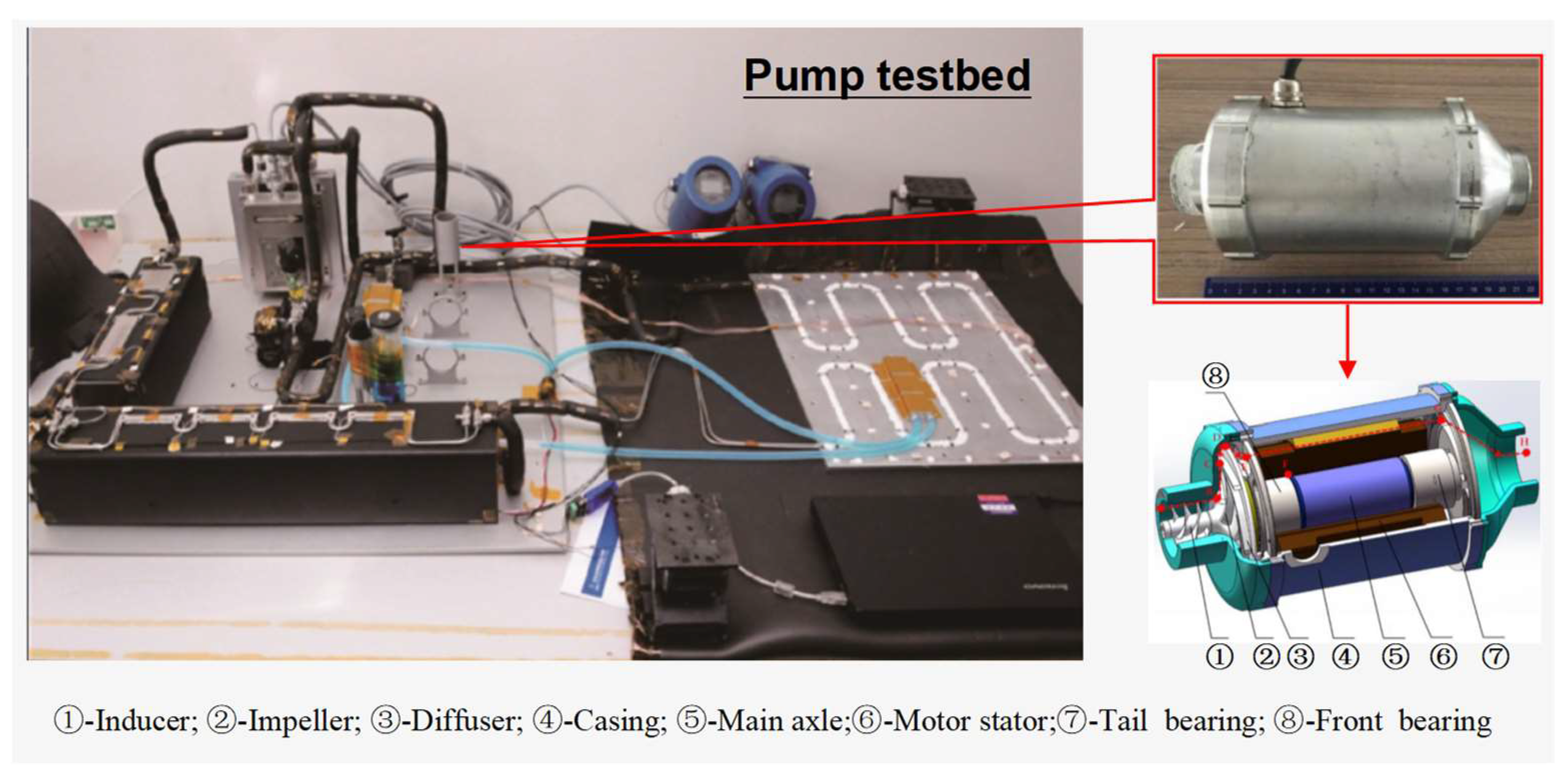
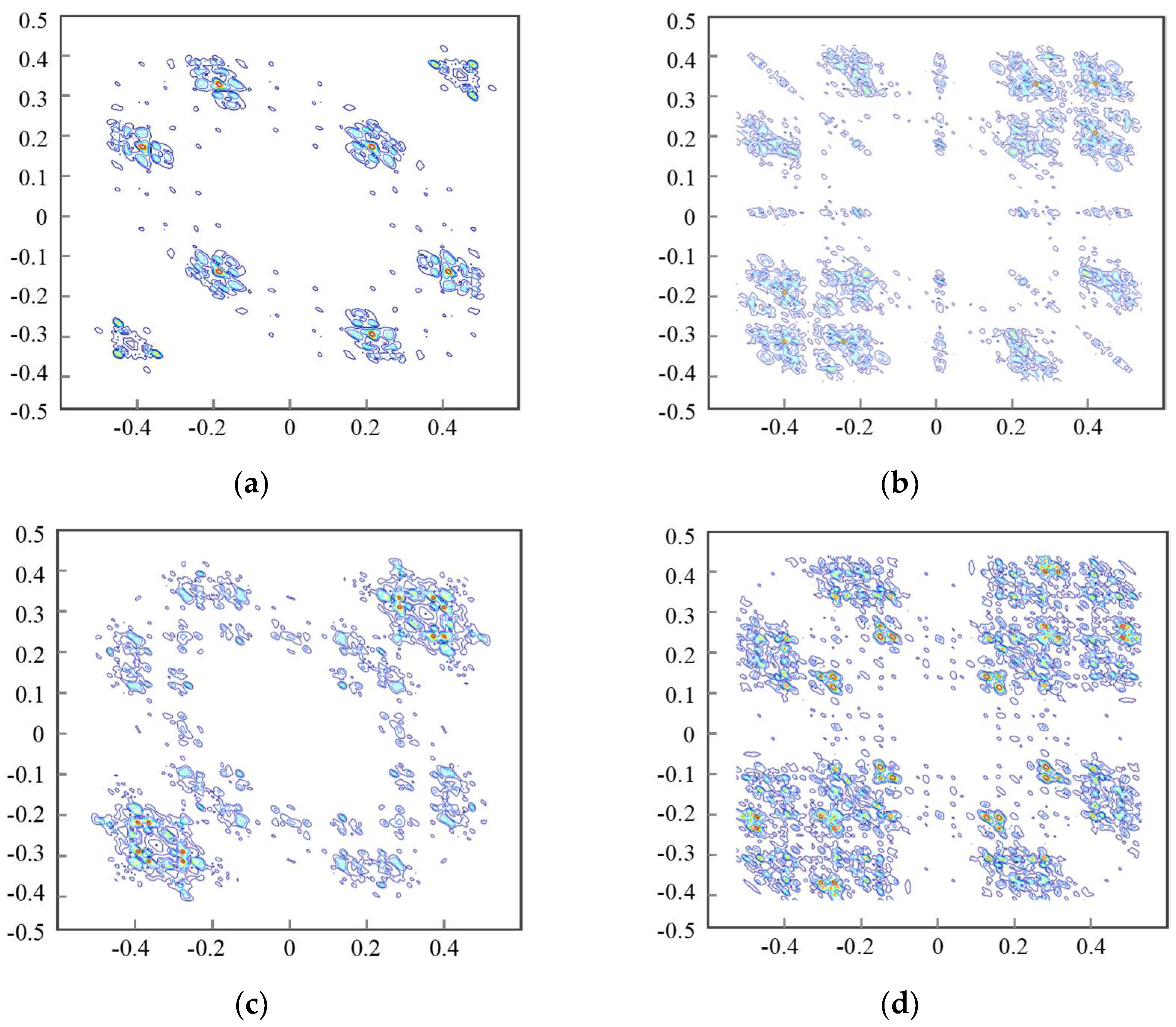

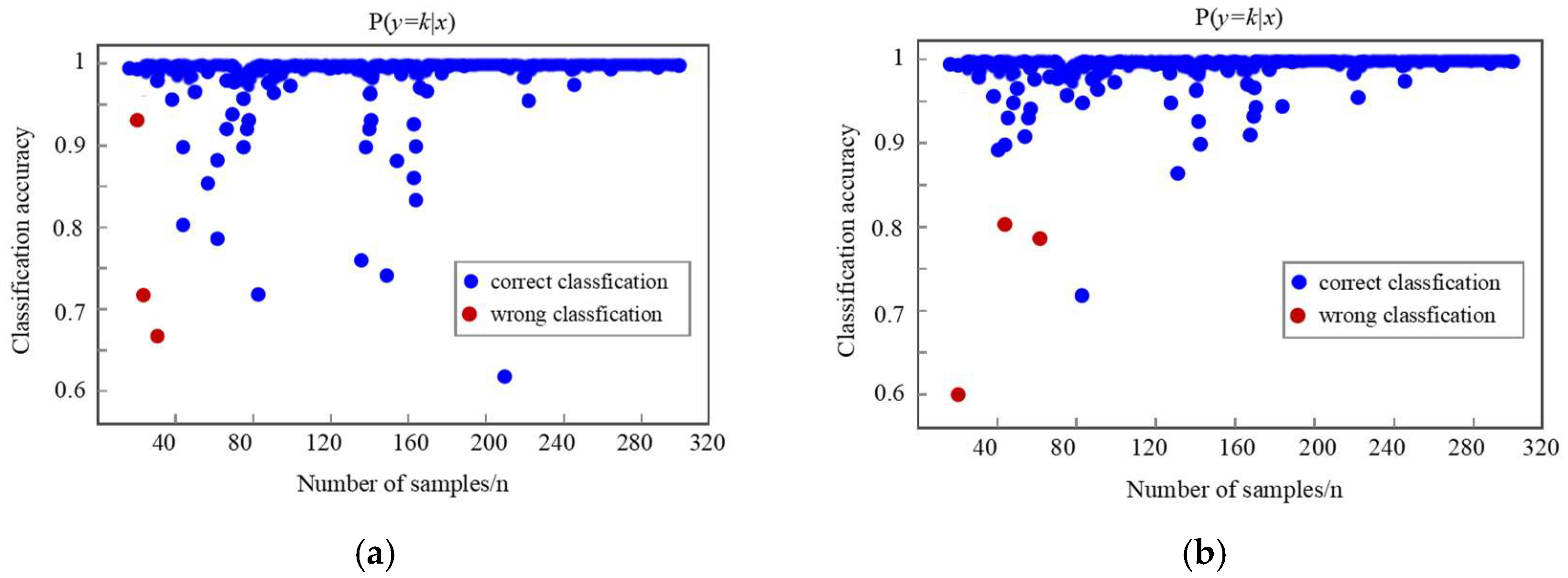
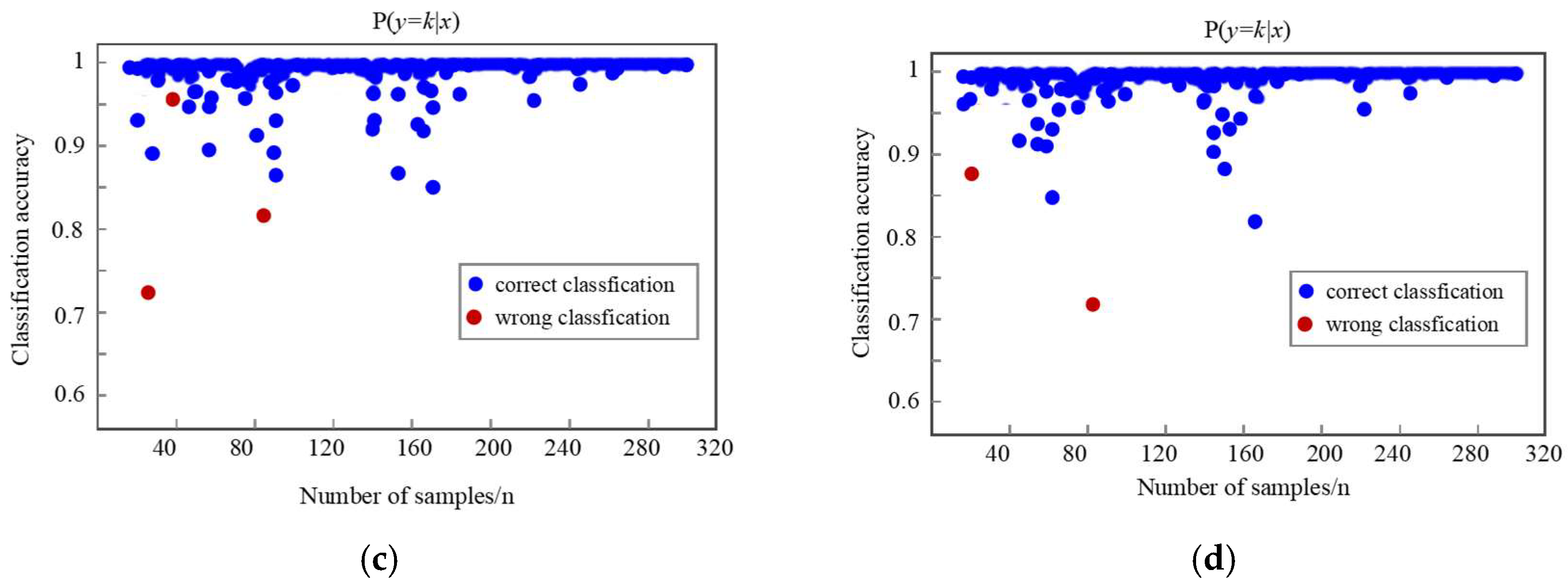
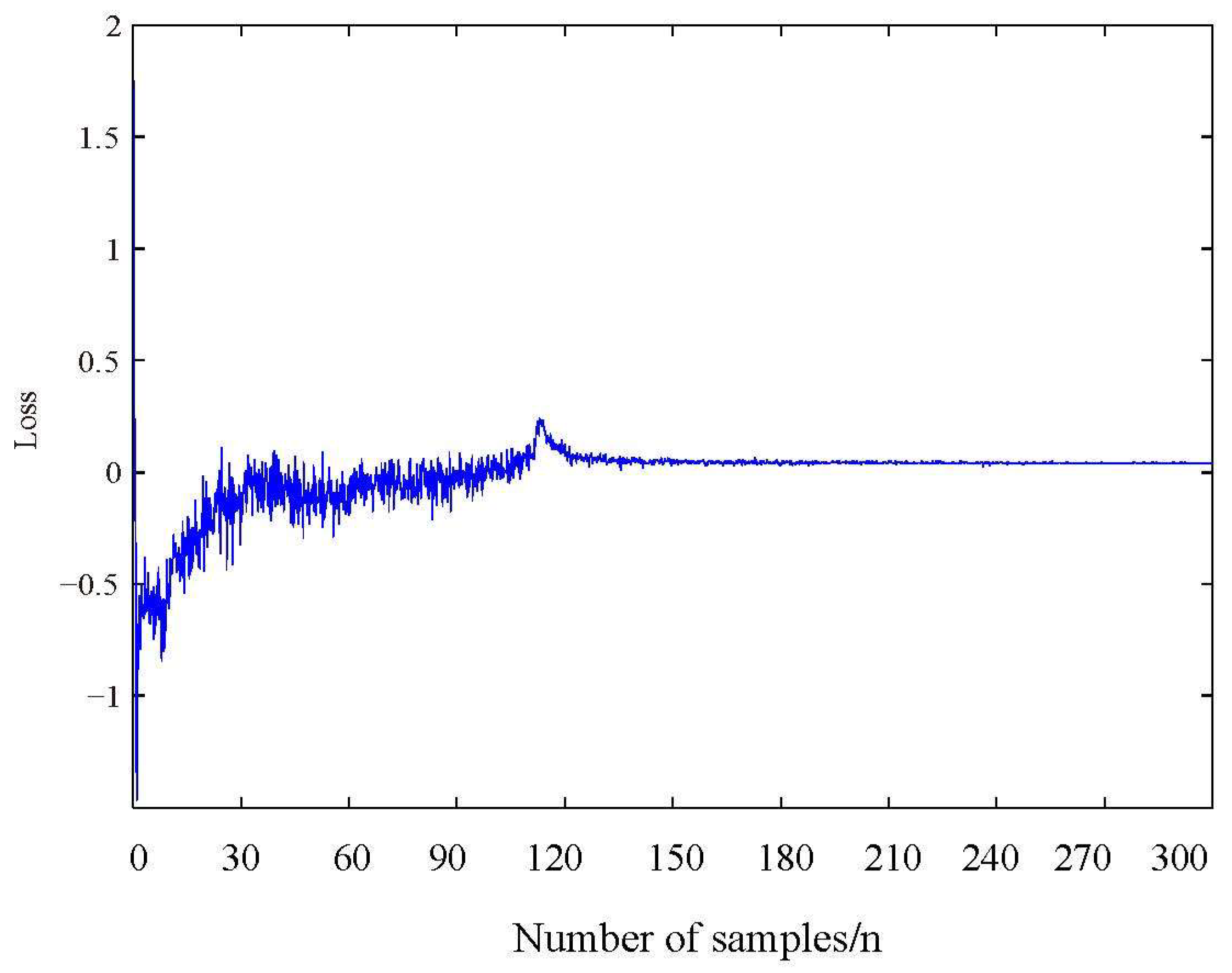
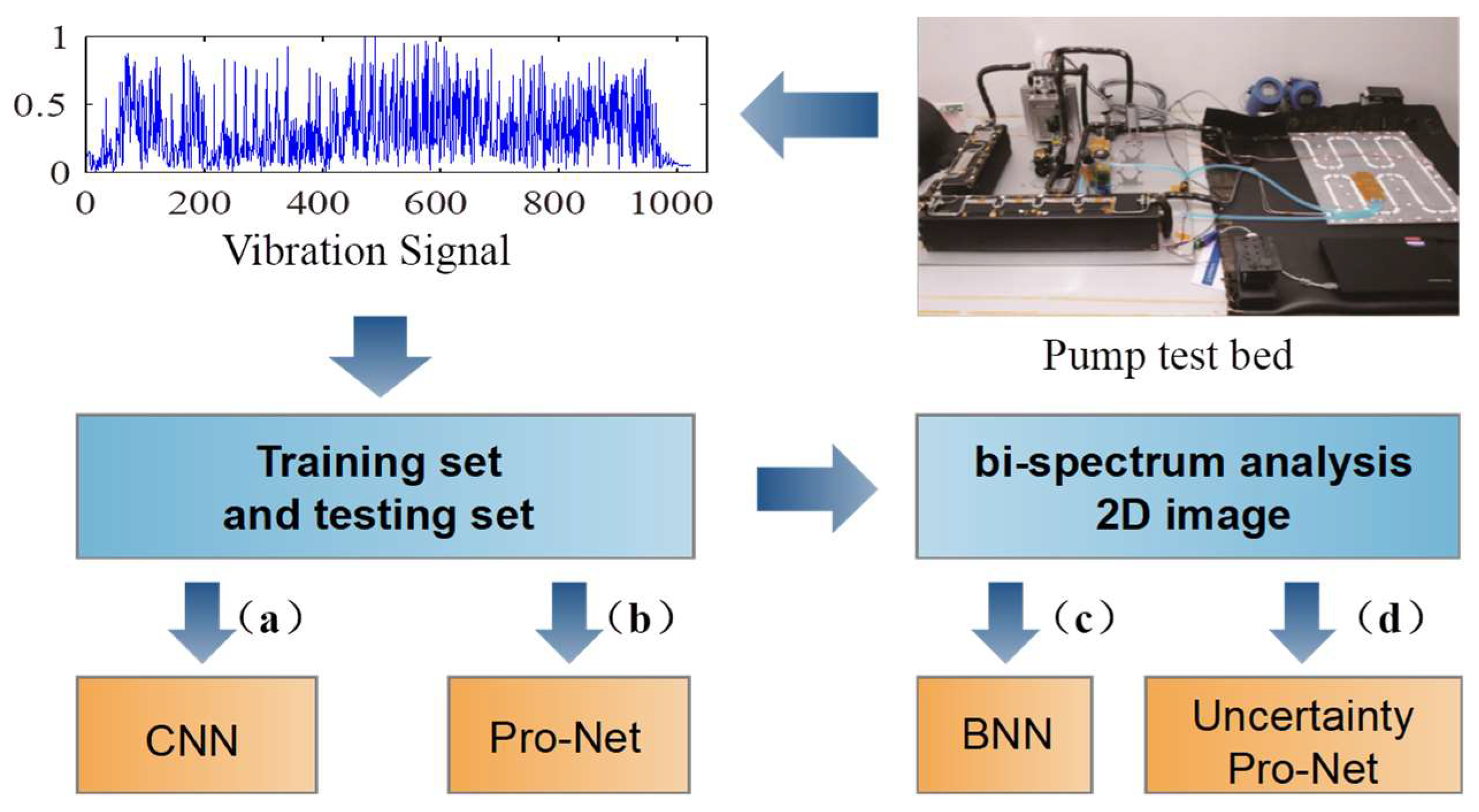
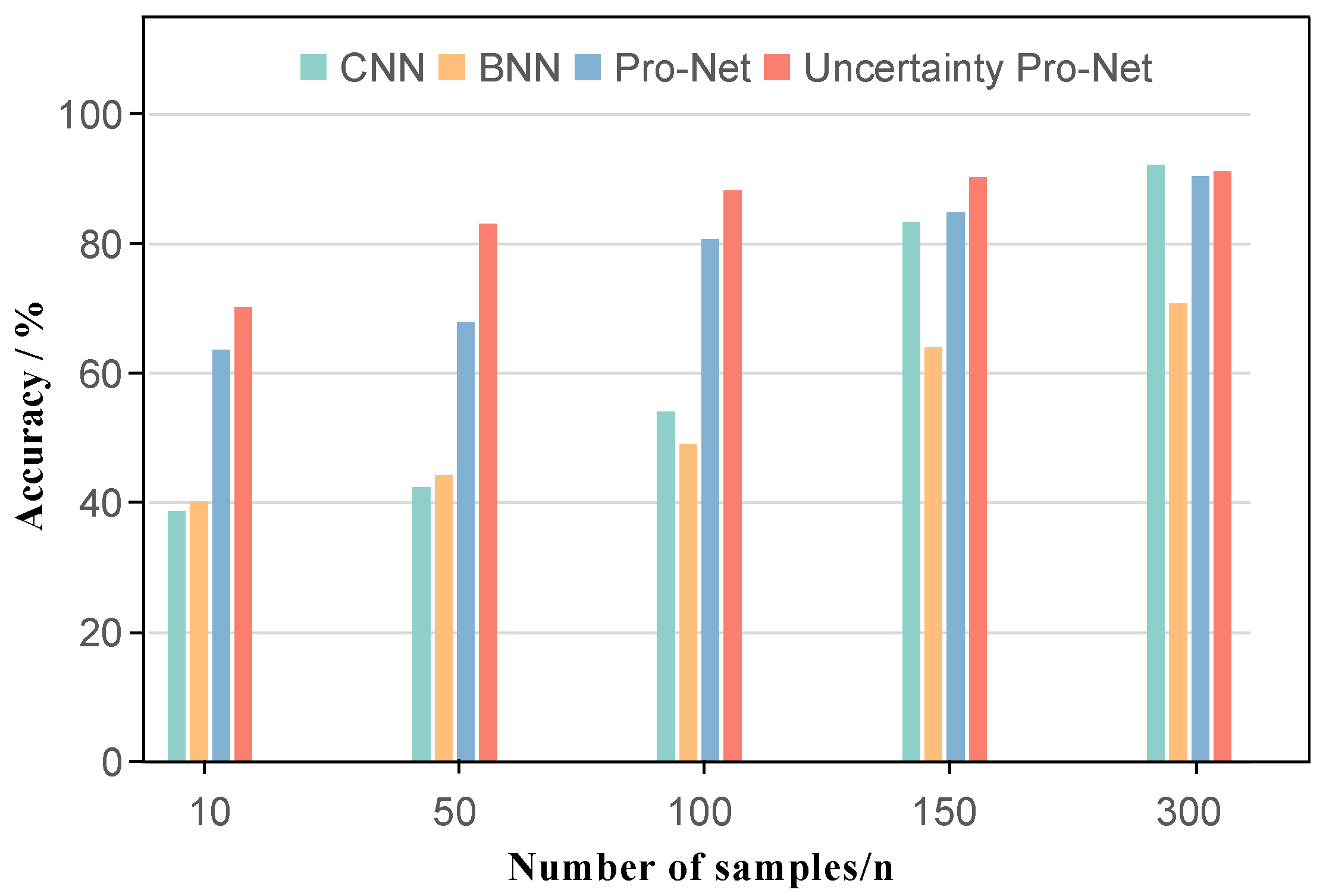
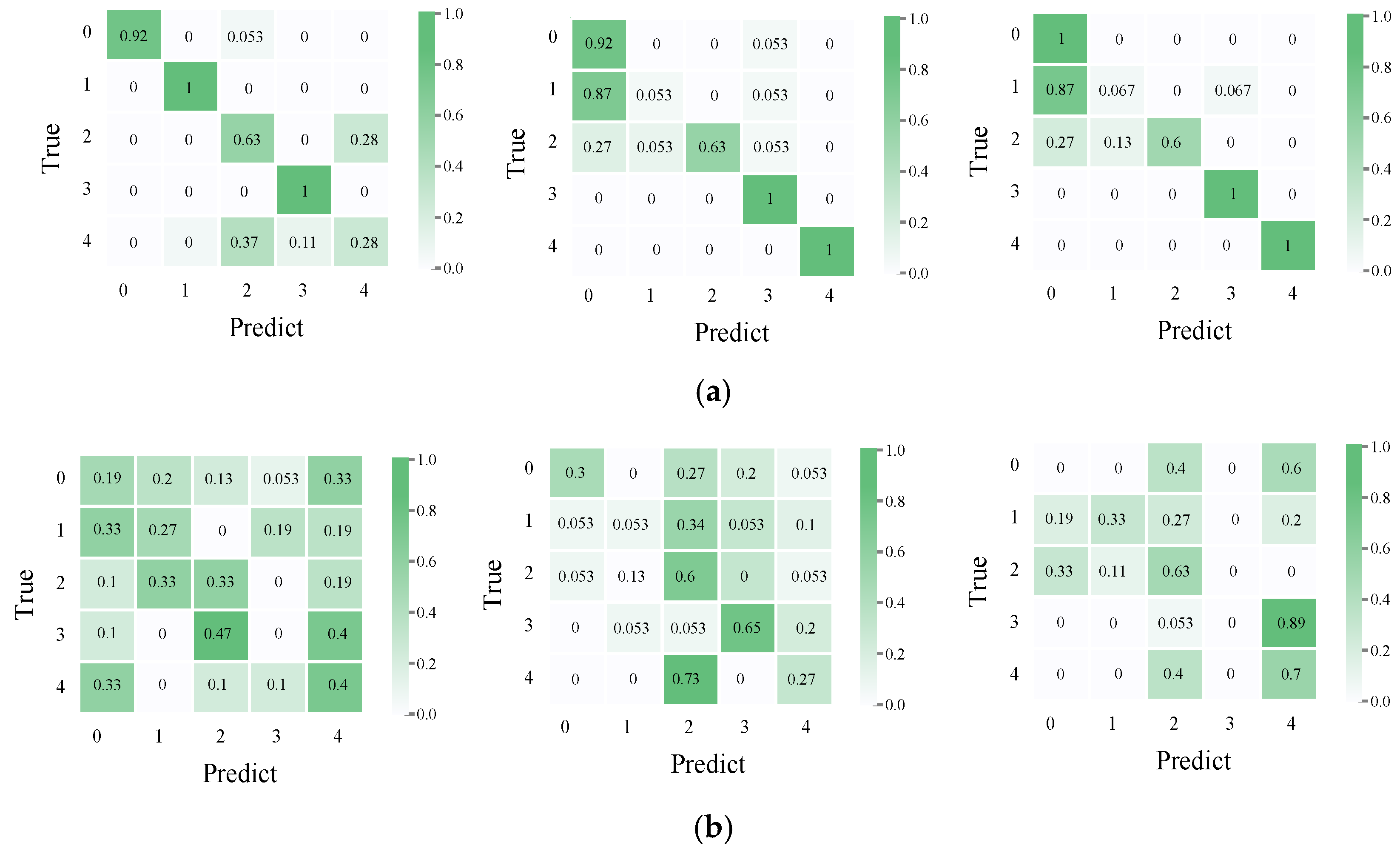
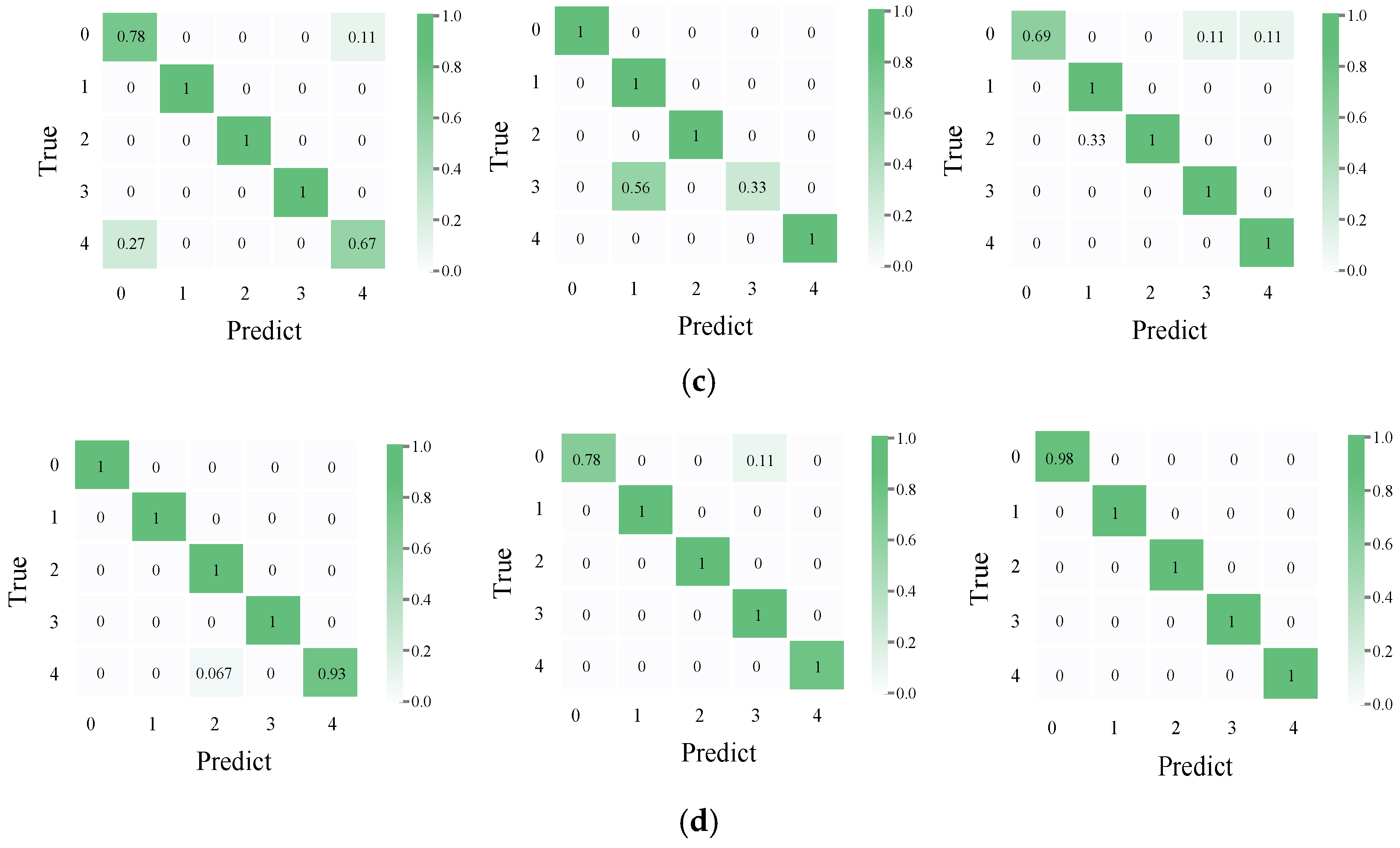
| No. | Parameter Settings | Value | No. | Parameter Settings | Value |
|---|---|---|---|---|---|
| 1 | Rated flow rate | 600 L/h | 1 | Rated speed | 7000 r/min |
| 2 | Inlet pressure | 0.17 MPa | 2 | Leakage rate | ≤1 × 10−7 Pa·m3/s |
| 3 | Lifting capacity | 220 kPa | 3 | Power consumption | ≤159 Kw |
| Model Name | eResNet |
|---|---|
| Architecture | |
| Parameter layers | 13 |
| Parameters |
| Failure Mode | EUF | Failure Mode | EUF |
|---|---|---|---|
| Bearing race wear | Impeller wear | ||
| Bearing rollers wear | Bearing pre-stress slack |
| Methods | 10 | 50 | 100 | 150 | 300 |
|---|---|---|---|---|---|
| CNN | 38.71 ± 0.16% | 42.41 ± 0.41% | 54.08 ± 0.01% | 83.36 ± 0.14% | 92.15 ± 0.24% |
| BNN | 40.25 ± 0.53% | 44.24 ± 0.18% | 49.05 ± 0.06% | 64.02 ± 0.14% | 70.82 ± 0.29% |
| Pro-Net | 63.59 ± 2.20% | 67.89 ± 1.91% | 80.74 ± 0.07% | 84.84 ± 0.04% | 90.42 ± 0.20% |
| Uncertainty Pro-Net | 70.24 ± 0.30% | 83.04 ± 0.06% | 88.18 ± 0.08% | 90.25 ± 0.04% | 91.17 ± 0.03% |
Disclaimer/Publisher’s Note: The statements, opinions and data contained in all publications are solely those of the individual author(s) and contributor(s) and not of MDPI and/or the editor(s). MDPI and/or the editor(s) disclaim responsibility for any injury to people or property resulting from any ideas, methods, instructions or products referred to in the content. |
© 2023 by the authors. Licensee MDPI, Basel, Switzerland. This article is an open access article distributed under the terms and conditions of the Creative Commons Attribution (CC BY) license (https://creativecommons.org/licenses/by/4.0/).
Share and Cite
Wu, W.; Zou, T.; Guo, D.; Zhang, L.; Wang, K.; Li, X. Fault Diagnosis for China Space Station Circulating Pumps: Prototypical Network with Uncertainty Theory. Symmetry 2023, 15, 903. https://doi.org/10.3390/sym15040903
Wu W, Zou T, Guo D, Zhang L, Wang K, Li X. Fault Diagnosis for China Space Station Circulating Pumps: Prototypical Network with Uncertainty Theory. Symmetry. 2023; 15(4):903. https://doi.org/10.3390/sym15040903
Chicago/Turabian StyleWu, Wenbo, Tianji Zou, Dong Guo, Lu Zhang, Ke Wang, and Xuzhi Li. 2023. "Fault Diagnosis for China Space Station Circulating Pumps: Prototypical Network with Uncertainty Theory" Symmetry 15, no. 4: 903. https://doi.org/10.3390/sym15040903
APA StyleWu, W., Zou, T., Guo, D., Zhang, L., Wang, K., & Li, X. (2023). Fault Diagnosis for China Space Station Circulating Pumps: Prototypical Network with Uncertainty Theory. Symmetry, 15(4), 903. https://doi.org/10.3390/sym15040903





